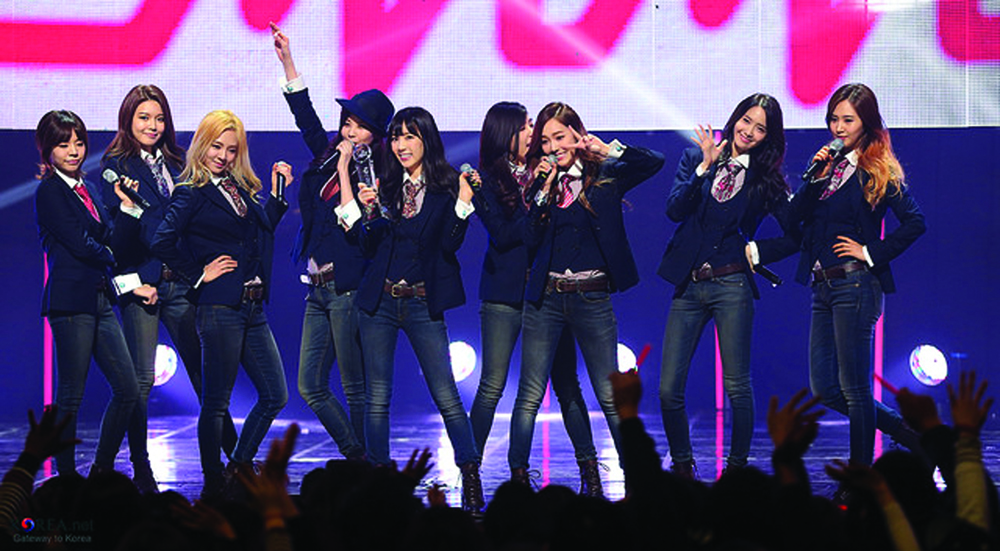You probably heard it on the radio, learned its dance moves, and tried to learn its words without comprehending them: Psy’s “Gangnam Style” swept the nation in 2012, leaving American teens in a frenzy. Most young adults bought into the trend of this song, but never truly learned about Korean pop music. Although we may think we understand K-pop based on one song by Psy, K-pop, like American music, has many different genres and variations.
Although its name makes it seem otherwise, K-pop is not just pop music; it incorporates many genres. Much like American music, it includes rock, hip-hop, rap, ballads, techno, pop, reggae, and indie. However, most artists will mix some or all of these genres, along with Western music, in order to create their own style.
K-pop experienced its first boom in the early 1990s, leaving behind the traditional style of singing. It took the name Hallyu, literally meaning “Korean flow,” when K-pop spread across China, Japan, and Korea. One of the first music companies that grew to become the largest entertainment company in Korea today was SM Entertainment, founded by Lee Soo Man in 1989. SM promoted a group called “Seo Taiji and The Boys,” the first boy band in Korea that took the nation by storm, changing Korean music’s presentation forever. Incorporating rap, pop, ballads, and rock, they were able to create a new type of music never before heard in Korea.
K-pop’s performance makes it stand apart from American music as well. Most Korean artists that sing K-pop also dance. It is extremely important that K-pop artists know how to dance and sing in order to provide a true performance for their listeners. More often than not, unless they play instruments, a group that doesn’t dance while they sing won’t do well in the industry. To Korean artists, knowing how to dance and sing properly trumps all the other elements of a performance, such as lighting, pyros, or other technical features.
Another dividing factor separating Korean music from American music is the fact that K-pop has more group-based bands than single artists. These bands are typically four or more people, and one gender; within these groups are a variety of roles. In the group BigBang there are five male members: G-Dragon performs the main vocals, T.O.P raps, Taeyang sings vocals for ballads, and Seungri and Daesung sing. Each performer has a specific style of singing that contributes to the cohesion of the group. Other groups within K-pop that perform similarly are Girls Generation, 2NE1, B.A.P., Super Junior, APink, 2PM, EXO, and Orange Caramel.
K-pop focuses on giving its listeners a complete experience. Instead of listening to Gangnam Style again, try exploring what else is out there. You might just discover you like it.

